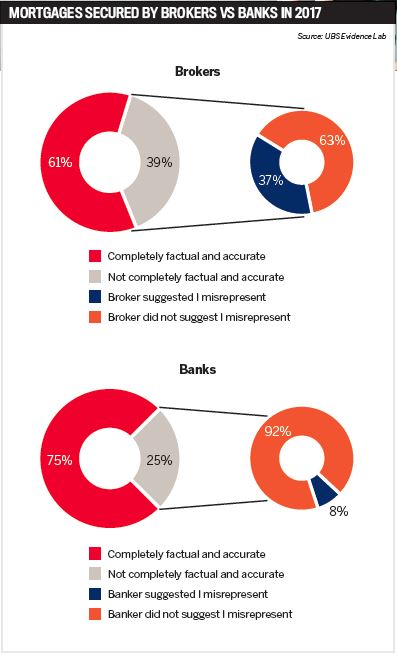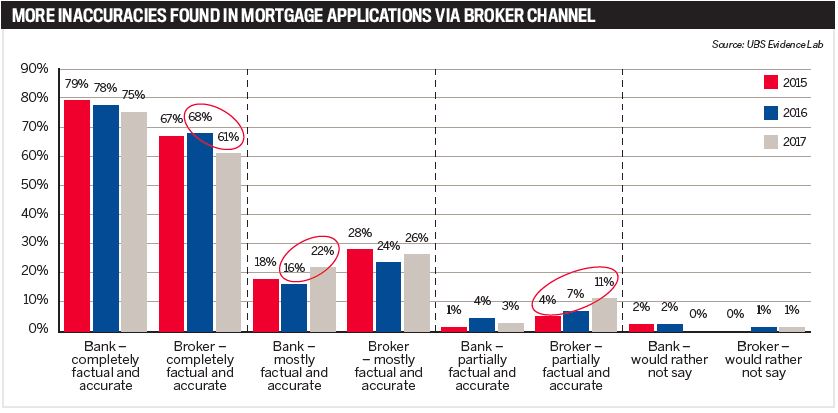In a rare moment, ASIC, APRA and the RBA spoke about the benefits brokers provide consumers, all while a new report from UBS continued to spark outrage
AMID the Sedgwick and ASIC reviews, regulatory changes and increasing angst and scrutiny
of the broking profession, mid-September provided a rare ego boost for an industry that’s taken a bruising this year.
In a rare showing, ASIC, APRA, the RBA and the major banks expressed some positive opinions about brokers and the outcomes they provide consumers.
While they were not all talking at the same time or about the same thing, brokers were recognised in a favourable light by the regulators in a variety of ways – at a House of Representatives’ committee, in submissions made to the Productivity Commission Inquiry, and at an industry conference.
Banks back brokers
In separate submissions from RBA and APRA to the Productivity Commission Inquiry into Competition in the Australian Financial System, brokers were given kudos.
The RBA recognised that the widespread use of brokers had created increased industry competition in residential lending, had led to greater lending efficiency, and had provided access to a wider range of products. “For borrowers, brokers reduce search costs by efficiently comparing deals across lenders. The introduction of a wider range of mortgage products, partly in response to prudential regulations, has increased the benefits for consumers of using brokers,” the RBA wrote.
APRA noted the significant role brokers have played in expanding the distribution networks of smaller residential lenders, helping them gain market share.
“While smaller banking providers do not always offer the same account-based service or features, for instance widely available ATM or branch networks, they are to a large degree able to obtain wide distribution through the use of brokers and technological advances,” the regulator wrote.
“These factors, in addition to competitively priced products, appear to have assisted smaller providers in gaining market share in the supply of residential mortgages.”
NAB,
CBA and
Westpac also expressed the importance of brokers in improving competition in the financial system.
NAB said brokers are useful because they can assist “time poor customers to assess mortgage products across different financial institutions and offer a differentiated and competitive value proposition compared with banks”.
The lender also remarked that the 16,000 brokers in Australia, many of whom are small business owners, “form a significant part of the Australian economy”.
CBA said it believed “brokers should and will continue to play an important role in the mortgage market”.
Westpac said smaller lenders find brokers particularly useful. “These companies may offer competitive rates and quality products, notwithstanding that they may lack the presence (including physical footprint), size and marketing of bigger institutions,” the bank said. An increasing broker market share offers customers a greater variety of choice and has supported market penetration of smaller lenders, Westpac added.
“The introduction of a wider range of mortgage products, partly in response to prudential regulations, has increased the benefits for consumers of using brokers” RBA
 UBS, the outlier
UBS, the outlier
While brokers deserve a pat on the back after reading those submissions, the usual bearer of bad news for brokers – UBS Bank – released yet another searing takedown of the third party channel.
In its latest report referring to $500bn in ‘liar loans’, UBS analysts found that brokers let through a higher percentage of misrepresented loans compared to the banks. The report used data collected during an online survey of 907 Australians who had taken out a mortgage in the last 12 months. It asked borrowers 70 questions about their background, motivations, purchase method and expectations.
From that, the analysts deduced that a third of loan applications from the direct and third party channels were inaccurate.
While the number of “completely accurate” mortgages submitted through both brokers and branches dipped from 2016 to 2017, discrepancies were higher among brokers.
During that time period, the level of accurate mortgages fell from 68% to 61% for brokers and from 78% to 75% for branches.
The analysts noted that “of concern” was the increasing number of people who took out a mortgage via the broker channel with a “partially factual and accurate” application. This increased from 4% in 2015 to 11% this year.
“Given the rising level of misstatement over multiple years, we estimate there are now around $500bn of factually inaccurate mortgages on the banks’ books,” the UBS analysts wrote. (‘Liar loans’ was a term coined in the US during the GFC for mortgages where documentation was inaccurate.)
“While household debt levels, elevated house prices and subdued income growth are well known, these findings suggest mortgagors are more stretched than the banks believe, implying losses in a downturn could be larger than the banks anticipate,” they wrote.
The
MFAA questioned the way UBS had represented the results, given that they do not reflect the same findings as ASIC’s Review of Mortgage Broker Remuneration, which analysed 1.4 million home loans worth $5.5bn, collected 157 data points for each, and surveyed 3,000 consumers on their opinion of brokers.
“UBS has implied in its commentary that brokers are not fulfilling their obligation to act as professionals, or that they are placing consumers into high risk lending that they cannot afford. The findings simply do not match the reality of the consumer experience, nor ASIC’s actual data into mortgage outcomes,” the MFAA said.
The
FBAA said UBS was “reckless with its analysis”, which was based on “implied presumptions”.
FBAA executive director Peter White questioned the validity of the data.
“I want to see their data analysis,” he said. “We need to see the questions they asked participants. UBS must prove there is no steering of answers or influences to produce outcomes which are not factual or fair or commercially sound.”
During a House of Representatives Standing Committee on Economics on 14 September in regard to ASIC’s Annual Report, senior executive leader of deposit takers, credit and insurers
Michael Saadat was asked about the UBS report.
“Where we would disagree with that UBS report is in relation to where things stand today as distinct from where they possibly were many years ago. We think things have improved significantly in terms of responsible lending,” he responded.
While he acknowledged that there was still more work to be done, and that ASIC had a number of reviews underway examining the broking industry and its compliance, he reiterated that “things have improved”.
Saadat pointed to one of the observations in the UBS survey, which stated that consumers reported that they did not feel that loan underwriting standards had changed over the past couple of years and they didn’t think it was any harder to get a loan.
“For many consumers, the additional work and additional steps that banks and other lenders are taking to verify someone’s financial situation won’t be apparent to them,” he said. “So we think consumers are probably not the best judge of what banks are doing behind the scenes to make sure borrowers can afford the loans they’re being provided with.”
Saadat said ASIC has a project underway at the moment that is looking at loan fraud more systematically to identify more comprehensive solutions.
“Given the rising level of misstatement over multiple years, we estimate there are now around $500bn of factually inaccurate mortgages on the banks’ books” UBS

Don’t blame the brokers
Meanwhile, the day after the UBS report was released, a senior executive of the Credit and Investments Ombudsman (CIO) said that only about 6% of complaints sent to their office related to brokers and aggregators, with disputes much more likely to stem from residential lenders.
“We don’t get huge amounts of broker complaints. In respect to statistics, it’s probably on a much lesser end,” Danielle Gewerc, CIO senior manager of dispute resolution, said during a broker Q&A session at the CIO’s Dispute Resolution Conference on 12 September.
In comparison, 46% of CIO complaints are about residential lenders, Gewerc said.
“We think things have improved significantly in terms of responsible lending” Michael Saadat, ASIC
Of the 6% of broker complaints, the majority are for failure to act with due care and skill, inappropriate finance, misrepresentation and misleading misconduct, and other issues. Inappropriate finance is the biggest misstep by brokers, she added, especially around the failure to sufficiently examine a client’s living expenses.
In a comment on Australian Broker’s website in response to the UBS story, broker Ray Weir wrote that the only area open to misrepresentation was the living expenses budget.
“The stated living expenses can’t be below the ‘Household Expenses Measurement’ issued by the Bureau of Statistics, or the lender will query the budget. Many lenders now require a living expense budget to be completed and signed by the borrowers,” he said.
“While deliberate fraud will occasionally occur in any financial activity by an individual or business, I find it hard to believe loan fraud is widespread. If it was, I’m sure we’d see considerably more loan delinquency.”



 UBS, the outlier
UBS, the outlier
